Oral
Preclinical Contrast Mechanism & Spectroscopy
ISMRM & ISMRT Annual Meeting & Exhibition • 10-15 May 2025 • Honolulu, Hawai'i

| 08:15 |
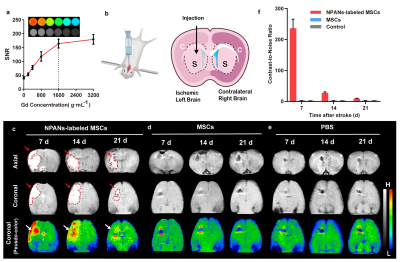 |
1144. NaGdF4@PDA-ALD
Nanoparticles Enhance Mesenchymal Stem Cell Therapy for Ischemic
Stroke: MRI Tracking and Protection Mechanisms

S. Wu, X. Chu, P-Y Wu, Z. Yao
Huashan hospital, Fudan University, Shanghai, China
Impact: This study provides a novel strategy to enhance
MSC-based therapies for ischemic stroke, potentially
improving patient outcomes. The nanoparticles protect MSCs
might open new avenues for developing more effective cell
therapies and in vivo tracking methods for regenerative
medicine.
|
| 08:27 |
 |
1145. Selective
and targeted imaging for pancreatic cancer in a mouse model:
structured polyethylene glycol as a specific MR molecular
imaging agent
S. Swanson, N. Nelson, T. Hopkins, A. Hopkins
University of Michigan, Ann Arbor, United States
Impact: The delivery and MRI of the sPEG nanopolymers
demonstrate a clear path to a new imaging paradigm –
yielding PET-like images of sPEG and providing oncologists
and radiologists with a new tool to quickly detect and
diagnose solid cancers.
|
| 08:39 |
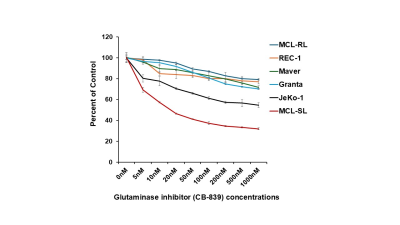 |
1146. Metabolic
inhibition therapy targeting glutaminolysis in mantle cell
lymphoma
K. Nath, P. K. Gupta, S. Wang, S. Rao, A. Shestov, N. Sen,
S. Orlovskiy, C. Lobello, D. Rushmore, J. Basappa, D.
Nelson, F. Arias-Mendoza, M. Wasik
University of Pennsylvania, Philadelphia, United States
Impact: Therapy-mediated decreased intra-tumoral
concentrations of lactate and alanine measured by 1H
MRS may potentially become early and sensitive biomarkers of
glutaminase inhibition in MCL and, likely, other types of
malignancies.
|
| 08:51 |
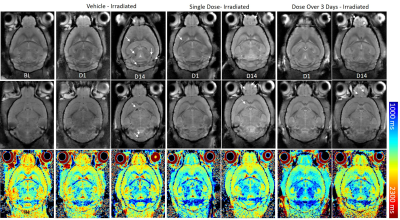 |
1147. Preliminary
MRI Findings for Manganese Chloride as a Novel Radiation
Countermeasure Against Acute Radiation Sickness in Mice
A. Korotcov, M. Majji, N. Rakhilin, G. Holmes-Hampton, A.
Ahmed, B. Knollmann-Ritschel, M. Hood
Uniformed Services University, Bethesda, United States
Impact: For radiation research being conducted in
animals, serial MR imaging can provide important information
on health status. Establishing MRI techniques and
postprocessing pipelines, plus tools for histological
correlation, MRI will become a key tool to evaluate animals
in radiation research.
|
| 09:03 |
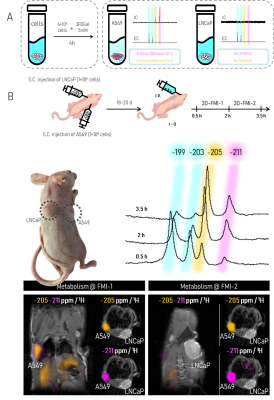 |
1148. In
Vivo Fluorine Metabolic Imaging (FMI) of Cancer
D. Cohen, L. Saad, L. Avram, H. Allouche-Arnon, A. Bar-Shir
Weizmann Institute of Science, Rehovot, Israel
Impact: FMI with 3FDGal as an 19F-MRI tracer represents
a revolutionary shift in oncologic imaging. By concurrently
mapping sugar oxidizing/reducing enzymes, tumor
categorization becomes available at the molecular level,
regardless of glycolysis-dependence, opening up new
frontiers in cancer research and detection.
|
| 09:15 |
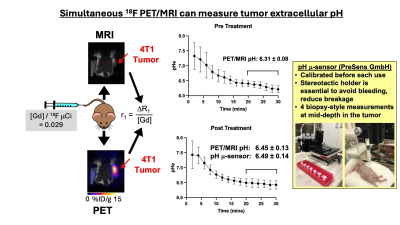 |
1149. Imaging
tumor extracellular pH using PET/MRI co-agents
C. Dhakan, X. Liang, L. Palagi, J. DeLaCerda, F. W. Schuler,
M. D. Pagel
University of Wisconsin - Madison, Madison, United States
Impact: This dual PET/MRI approach provides a reliable,
non-invasive method for measuring tumor pHe, potentially
transforming how tumor acidosis is monitored. It could lead
to earlier, more accurate assessments of treatment response,
enhancing personalized cancer therapy strategies.
|
| 09:27 |
 |
1150. From
PET to MRI: In vivo Mapping the HSV1-TK Reporter Gene with
“hot-spot” 2H-MRI Using Synthetic Deuterated Thymidine Analog
H. Allouche-Arnon, L. Mimoun, B. Subramani, E. Montrazi, A.
Bar-Shir
Weizmann Institute of science, Rehovot, Israel
Impact: The successful implementation of the proposed 2H-MRI
reporter system will allow the longitudinal quantitative
mapping of a reporter gene expression, elucidating the
kinetics and efficiency of gene and cell therapies employed
in basic research and the clinic.
|
| 09:39 |
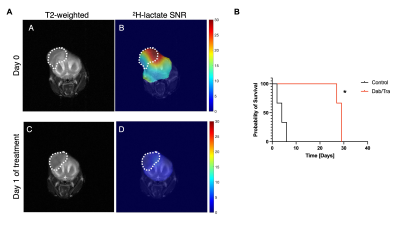 |
1151. Deuterium
metabolic imaging of response to precision therapy in BRAF-V600E
mutant gliomas
G. Batsios, S. Udutha, A. M. Gillespie, C. Petritsch, S.
Mueller, P. Viswanath
University of Caifornia, San Francisco, San Francisco, United States
Impact: Our studies mechanistically link BRAF/MEK
inhibition with downregulation of glycolysis and identify
[6,6’-2H]-glucose
as a novel contrast agent for imaging early response to
therapy. Clinical translation of our studies will enable
precision imaging of response to therapy for BRAF-mutant
gliomas.
|
| 09:51 |
 |
1152. Dynamic
CEST Imaging of Extracellular Lactate In Vivo in Subcutaneous
Tumors using PARACEST Shift Reagents

R. Chiaffarelli, P. Cruz, J. Cotton, T. Kelm, S. Lee, M.
Ghaderian, M. Zimmermann, C. Geraldes, P. Jurek, A.
Martins
University Hospital Tuebingen, Tuebingen, Germany
Impact: EuPCTA and YbPCTA enable selective imaging of
extracellular lactate, allowing detection of metabolic
compartments in the tumor microenvironment. PCTA-based
complexes represent a scaffold for the optimization of
metabolic responsive imaging probes to map tumor
heterogeneity and aggressiveness.
|
| 10:03 |
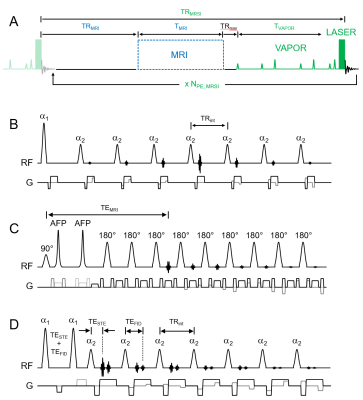 |
1153. Parallel
Detection of MRI and 1H MRSI for Efficient Multi-Contrast
Anatomical and Metabolic Imaging.
R. de Graaf, M. Thomas, H. De Feyter
Yale University, New Haven, United States
Impact:
Parallel detection of MRI and 1H MRSI eliminates the extra scan time inherent to standard, sequential acquisitions. The increased efficiency can be used to achieve shorter examinations in clinical or high-throughput environments or allow higher-resolution and/or additional contrast research scans. |
The International Society for Magnetic Resonance in Medicine is accredited by the Accreditation Council for Continuing Medical Education to provide continuing medical education for physicians.